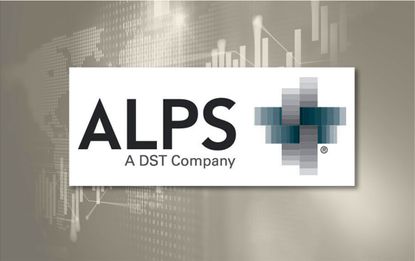8 Best Energy ETFs to Buy
Oil and gas stocks have enjoyed a solid 2024, and these energy ETFs can give investors exposure to the space.


Energy stocks and exchange-traded funds (ETFs) have been popular bets so far this year.
While the sector is not the best performer – that distinction goes to utilities – the Energy Select Sector SPDR Fund (XLE) has delivered a healthy total return (price plus dividends) of 10%, driving numerous attached energy ETFs higher.
"Certainly, geopolitical concerns have added to higher prices, with focus squarely on the Israel-Hamas conflict and worries hovering over markets regarding the potential for the war to broaden into the oil-producing region," says Quincy Krosby, chief global strategist, and Joshua Cline, associate analyst, for LPL Financial.
"The attacks on oil tankers in the Red Sea by the Yemen-based Houthis, considered a proxy for Iran, have also led to crude oil prices inching higher," Krosby and Cline write.
"Oil markets are clearly nervous about the widening conflict between Israel, Hezbollah and Iran," writes Jim Patterson, managing editor of The Kiplinger Letter, in Kiplinger's energy outlook. "That likely reflects concerns that Israel could strike Iran's oil export facilities and cut off a meaningful portion of the world's daily oil supply."
And we are only at the beginning of winter heating season in North America. As temperatures drop, demand for natural gas and other heating fuels will rise.
Indeed, the Energy Information Administration's base case assumes that "temperatures across much of the country are set to be colder this year." So homes will use more energy.
At current levels, and given the geopolitical and seasonal factors at play, there are both short- and long-term cases for oil and gas.
If you want to add exposure to the sector, here are our eight best energy ETFs to buy now.

Energy Select Sector SPDR Fund
- Assets under management: $36.3 billion
- Dividend yield: 3.4%
- Expenses: 0.09%, or $9 annually on a $10,000 investment
Every conversation about the best energy ETFs to buy should begin with the Energy Select Sector SPDR Fund (XLE, $90.07), the largest such exchange-traded fund on the market by a country mile.
With more than $36 billion under management, XLE is nearly five times as big as the runner-up in the category, the Vanguard Energy ETF (VDE), at approximately $7.8 billion.
XLE, which celebrated its 25th birthday last December, is pretty straightforward: It's a collection of the 22 energy stocks currently found within the S&P 500 Index. That translates into a concentrated heap of big, blue-chip, U.S.-based oil-and-gas names.
That also means outsized exposure to two stocks, Exxon Mobil (XOM, 23% weighting) and Chevron (CVX, 15%), that combine to account for roughly 38% of XLE's assets.
Concentration risk is a serious concern for many ETFs. If one or two stocks account for so much of the portfolio, how much diversification are you really getting? But energy stocks, large and small, already move together based on underlying commodity prices.
In fact, heavy allocations to Exxon and Chevron provide ballast because parts of these integrated majors' businesses can still profit even when oil prices aren't rising.

Fidelity MSCI Energy ETF
- Assets under management: $1.6 billion
- Dividend yield: 3.2%
- Expenses: 0.084%
Some investors seeking out the best ETFs to buy simply prefer to choose the least expensive fund on offer. In the energy sector right now, that's the Fidelity MSCI Energy ETF (FENY, $24.70).
The good news: With FENY, you don't get less for your money – you get more. This Fidelity ETF tracks the MSCI USA IMI Energy Index, which currently results in 111 holdings versus 22 for XLE. Past that, though, you're getting a similar flavor of exposure.
FENY is a predominantly large-cap index, with about a quarter of the portfolio in mid-cap stocks and another 10% in small-caps. You're also getting quite a bit of Exxon and Chevron, at 23% and 13%, respectively.
Other holdings include ConocoPhillips (COP, 6% weight), EOG Resources (EOG, 4%) and Marathon Petroleum (MPC, 3%).
The Fidelity energy ETF's fee difference versus XLE isn't massive either, at 0.084 versus 0.09. That's less than a basis point, which is equal to 0.01%.
But you are getting a wider swath of stocks for less, which makes FENY worthy of consideration.

Invesco S&P 500 Equal Weight Energy ETF
- Assets under management: $531.0 million
- Dividend yield: 2.7%
- Expenses: 0.40%
If these massive allocations to Exxon and Chevron make you a little nervous, there's a way to get diversified energy exposure that's much more evened out.
Funds such as XLE and FENY are weighted by market cap, which means the bigger the stock, the more of it they hold in their portfolios. However, while many sector funds are weighted this way, a few aren't.
That number includes the Invesco S&P 500 Equal Weight Energy ETF (RSPG, $78.57).
Like XLE, the Invesco S&P 500 Equal Weight Energy ETF invests in the S&P 500 Energy Index, which means a current portfolio of the same 20 or so stocks. But instead of weighting them by market cap, RSPG starts every stock off at the same weight each quarter.
The stocks might move up or down over the next three months. But regardless of how big or small they've gotten, RSPG will simply rebalance them at the same weight come the following quarter.
Right now, then, neither Exxon or Chevron are among RSPG's top five holdings. Rather, Kinder Morgan (KMI) and The Williams Companies (WMB) – which combined are worth around $118 billion versus Chevron's $286 billion and Exxon's $504 billion – are the two top stocks, with current weightings of roughly 5% apiece.
Again, most energy stocks move along with oil and gas prices, so RSPG's performance is often similar to XLE's.
Still, if you want to rest easy knowing you're not carrying any excess single-stock risk, this Invesco fund will do the trick.

iShares Global Energy ETF
- Assets under management: $2.1 billion
- Dividend yield: 3.8%
- Expenses: 0.41%
Energy inflation isn't a purely American phenomenon. The rest of the world has been suffering from higher oil and gas prices … and many international oil giants have profited along with their U.S. brethren.
The largest, most liquid fund covering a wider world of energy equities is the iShares Global Energy ETF (IXC, $41.33) – a $2-billion-plus portfolio of 52 companies that dominate global energy production, refining, storage and other industries.
"Global" is the keyword here – it means the fund includes both domestic and international stocks. The official breakdown is approximately 60% U.S. and 40% rest of world, with Canada (13%), the U.K. (11%) and France (5%) representing the top non-American country weights.
Exxon and Chevron lead the way here, at 19% and 9% allocations, respectively. But you're also getting significant exposure to international energy giants including Britain's Shell (SHEL, 8%) and BP (BP, 3%) and France's TotalEnergies (TTE, 5%).
It's worth noting that in both the short and long term, U.S.-based energy stocks have outperformed their international peers.
But if you're looking to mitigate a little geographic risk while still printing a nice profit from higher global commodity prices, this is one of the best energy ETFs to do so.

iShares Global Clean Energy ETF
- Assets under management: $2.0 billion
- Dividend yield: 1.5%
- Expenses: 0.41%
All of the best energy ETFs on this list have so far covered traditional energy – namely, oil and natural gas. But clean energy is another avenue for potential growth that investors shouldn't ignore.
The low-carbon transition is one of several mega-cycles playing out in markets today, BlackRock said in its 2024 Global Outlook.
"The energy transition tends to get the headlines, but we see a related theme becoming an important investment story: climate resilience. This is the ability to prepare for, adapt to and withstand climate hazards, and to rebuild after climate damage," the team writes.
And, as far as clean energy goes, investors might want to act globally given that climate change is not just a U.S. issue.
With this in mind, investors might consider the iShares Global Clean Energy ETF (ICLN, $13.35). A juggernaut in its own right, ICLN is the largest clean-energy ETF and the fourth-largest energy ETF overall, hoovering up more than $2 billion in assets since its 2009 inception.
In lieu of traditional oil-and-gas names, ICLN is a diversified portfolio of 101 holdings across numerous industries, including electric utilities (34%), renewable electricity (27%) and heavy electrical equipment (12%) as well as semiconductors (10%) and semiconductor equipment (7%) and others that produce or otherwise provide technology or infrastructure for cleaner energy.
Individual green energy stocks include the likes of PV solar modules maker First Solar (FSLR) and U.S.-based residential and commercial solar firm Enphase Energy (ENPH) as well as Danish wind turbine maker Vestas Wind Systems (VWDRY).
Green energy and traditional energy often move in different directions; indeed, ICLN is down nearly 14% so far this year.
But geopolitical risks could spur further investment in cleaner technologies, setting up energy ETFs like ICLN for better returns.
(Note: If you're looking for a strong U.S.-specific clean-energy ETF, consider the SPDR S&P Kensho Clean Power ETF (CNRG), which charges 0.45%, has a 3-star Morningstar rating and has a Bronze Morningstar analyst rating.)

SmartETFs Sustainable Energy II ETF
- Assets under management: $5.1 million
- Dividend yield: 0.4%
- Expenses: 0.79%
We've witnessed a vast expansion in the number of active ETFs the past few years, which brings us to the SmartETFs Sustainable Energy II ETF (SOLR, $28.14).
SOLR, which is actively managed and fully transparent, is an equally weighted fund with roughly 30 positions.
While the ticker would seem to indicate a solar tilt, it generally invests "in companies poised to benefit from the shift to sustainable energy," whether that's actually producing alternative or renewable sources of energy or otherwise making these kinds of energy more efficient and/or accessible.
Holdings include some of the stocks mentioned in ICLN, such as First Solar. At No. 1 currently is American-Irish HVAC outfit Trane Technologies (TT). European utility stock Iberdrola (IBDRY) is No. 2, followed by electronics manufacturer Hubbell (HUBB) and renewable energy producer NextEra Energy (NEE).
SOLR is both young and small – it went live November 11, 2020, and has since only cobbled together $5.1 million in assets – but it has its draws. This fund is actually a "twin" of the Guinness Atkinson Alternative Energy Fund (GAAEX), which launched in 2006 and is run by GAAEX's three managers, Will Riley, Jonathan Waghorn and Edward Guinness.
Moreover, Morningstar has seen fit to give Sustainable Energy II ETF a Silver analyst rating.
"A strong management team and solid investment process underpin SmartETFs Sustainable Energy II ETF's Morningstar Medalist Rating of Silver," Morningstar says.

Alerian MLP ETF
- Assets under management: $8.9 billion
- Dividend yield: 7.7%
- Expenses: 0.85%
Income-minded investors might prefer our next pick to many of the other still-generous dividend ETFs on this list.
The Alerian MLP ETF (AMLP, $46.68) is interested in a special subsector of energy: master limited partnerships (MLPs).
Now, master limited partnerships themselves are merely a business structure – one that pairs the benefits of publicly traded equity with some special tax perks.
From contributor Aaron Levitt:
"MLPs, which first began to form in the 1980s, are a type of 'pass-through entity.' That's because their income isn't taxed at the corporate level, and is instead 'passed through' directly to owners and investors via dividend-esque 'distributions.' This system typically results in much-higher-than-average yields, often in the 7%-9% range."
However, as it pertains to the sector, most energy MLPs tend to relate to infrastructure: pipelines, terminals, storage and other facilities that make up the energy supply chain.
AMLP's holdings, for instance, include the likes of:
- Energy Transfer LP (ET), with 120,000 miles of nationwide energy infrastructure;
- MPLX (MPLX), which owns and operates logistics and storage and gathering and processing assets and provides fuels distribution services;
- Enterprise Products Partners (EPD), owner and operator of an integrated energy infrastructure network serving producers and consumers of natural gas, natural gas liquids, crude oil and refined products; and
- Plains All American Pipeline LP (PAA), which owns and operates transportation, terminal, storage and gathering assets in key crude oil and natural gas liquids producing basins and transportation corridors in the United States and Canada.
These types of companies typically feature much higher yields than exploration-and-production, refinery and distribution companies – evident in AMLP's juicy 7%-plus yield.
One benefit of holding MLPs through the AMLP energy ETF is that you can avoid the K-1 tax form that's typically required when unitholders receive MLPs' pass-through income (referred to as distributions).
AMLP processes the K-1 forms and instead distributes a basic 1099 to shareholders instead. But do consider consulting your tax adviser when deciding how to invest in MLPs.

United States 12 Month Oil Fund LP
- Assets under management: $55.4 million
- Dividend yield: 0.0%
- Expenses: 0.79%
Most of the best energy ETFs only allow you to gain exposure to changes in energy prices via energy stocks. But a few funds allow you to invest in another way: energy futures.
The largest such fund is the United States Oil Fund LP (USO), which tracks the price of West Texas Intermediate crude oil, the North American benchmark.
But numerous weaknesses were exposed when oil prices went negative during the COVID crash of 2020, forcing the ETF to change its investment structure multiple times.
It previously only invested in "front-month" futures, forcing it to constantly sell contracts about to expire and replace them with futures expiring in the next month. This resulted in disastrous results during 2020's oil plunge.
Subsequent changes allowed it a little more flexibility to invest in longer-dated contracts.
We prefer a related way to track oil: USO's little brother, the United States 12 Month Oil Fund LP (USL, $36.85). Like USO, USL trades futures, but it does so with not only front-month contracts but also contracts for the following 11 months.
Basically, that means it's trading across 12 months of futures instead of just a couple. This strategy historically has produced gains for USL that more closely track actual spot oil prices than USO.
Just know USL's weaknesses. While it's a more direct play on oil prices, it still won't perfectly track WTI, and you won't receive dividend income like you will with so many of the other energy ETFs on this list.
(Note: If you want to play natural gas in a similar manner, USCF also offers the United States 12 Month Natural Gas LP (UNL), at a 1.71% expense ratio.)
Learn more about USL at the USCF provider site.
Related content
Get Kiplinger Today newsletter — free
Profit and prosper with the best of Kiplinger's advice on investing, taxes, retirement, personal finance and much more. Delivered daily. Enter your email in the box and click Sign Me Up.
Kyle Woodley is the Editor-in-Chief of WealthUp, a site dedicated to improving the personal finances and financial literacy of people of all ages. He also writes the weekly The Weekend Tea newsletter, which covers both news and analysis about spending, saving, investing, the economy and more.
Kyle was previously the Senior Investing Editor for Kiplinger.com, and the Managing Editor for InvestorPlace.com before that. His work has appeared in several outlets, including Yahoo! Finance, MSN Money, Barchart, The Globe & Mail and the Nasdaq. He also has appeared as a guest on Fox Business Network and Money Radio, among other shows and podcasts, and he has been quoted in several outlets, including MarketWatch, Vice and Univision. He is a proud graduate of The Ohio State University, where he earned a BA in journalism.
You can check out his thoughts on the markets (and more) at @KyleWoodley.
-
 Super Micro Stock Plunges As Delisting Fears Rise: What to Know
Super Micro Stock Plunges As Delisting Fears Rise: What to KnowSuper Micro stock continues to slide after the AI company delayed the filing of its quarterly results, which could cause a delisting from the Nasdaq. Here's why.
By Joey Solitro Published
-
 Disney Stock Sails to the Top of the Dow After Earnings. Is It Time to Buy?
Disney Stock Sails to the Top of the Dow After Earnings. Is It Time to Buy?Walt Disney stock is higher Thursday after the entertainment giant beat earnings expectations and issued a strong outlook. Here's what Wall Street is saying.
By Joey Solitro Published
-
 Super Micro Stock Plunges As Delisting Fears Rise: What to Know
Super Micro Stock Plunges As Delisting Fears Rise: What to KnowSuper Micro stock continues to slide after the AI company delayed the filing of its quarterly results, which could cause a delisting from the Nasdaq. Here's why.
By Joey Solitro Published
-
 Disney Stock Sails to the Top of the Dow After Earnings. Is It Time to Buy?
Disney Stock Sails to the Top of the Dow After Earnings. Is It Time to Buy?Walt Disney stock is higher Thursday after the entertainment giant beat earnings expectations and issued a strong outlook. Here's what Wall Street is saying.
By Joey Solitro Published
-
 Cisco Stock: Why Wall Street Is Bullish After Earnings
Cisco Stock: Why Wall Street Is Bullish After EarningsCisco stock is lower Thursday despite the tech giant's beat-and-raise quarter, but analysts aren't concerned. Here's what you need to know.
By Joey Solitro Published
-
 How One Caregiver Is Navigating a Loved One's Dementia
How One Caregiver Is Navigating a Loved One's DementiaShe's spent many hours doing research and speaking with other caregivers to find her way to resources designed to help caregivers.
By Marguerita M. Cheng, CFP® & RICP® Published
-
 Stock Market Today: Markets Waver as Inflation Continues to Ease
Stock Market Today: Markets Waver as Inflation Continues to EaseStocks gave up early gains as waning consumer price inflation leaves rate-cut bets essentially unchanged.
By Dan Burrows Published
-
 October CPI Report Hits the Mark: What the Experts Are Saying About Inflation
October CPI Report Hits the Mark: What the Experts Are Saying About InflationCPI While the current pace of rising prices appears to have leveled off, the expected path of rate cuts has become less certain.
By Dan Burrows Published
-
 Nvidia Earnings: Updates and Commentary
Nvidia Earnings: Updates and CommentaryNvidia earnings have become a key event on Wall Street which makes the AI bellwether's next report, due out after the November 20 close, must-see viewing for investors.
By Kiplinger Staff Last updated
-
 What's Behind Starbucks Stock's New Sell Rating?
What's Behind Starbucks Stock's New Sell Rating?Starbucks stock has rallied hard since Brian Niccol was tapped as the coffee chain's new CEO, but one analyst thinks turnaround plans will be costly.
By Joey Solitro Published
